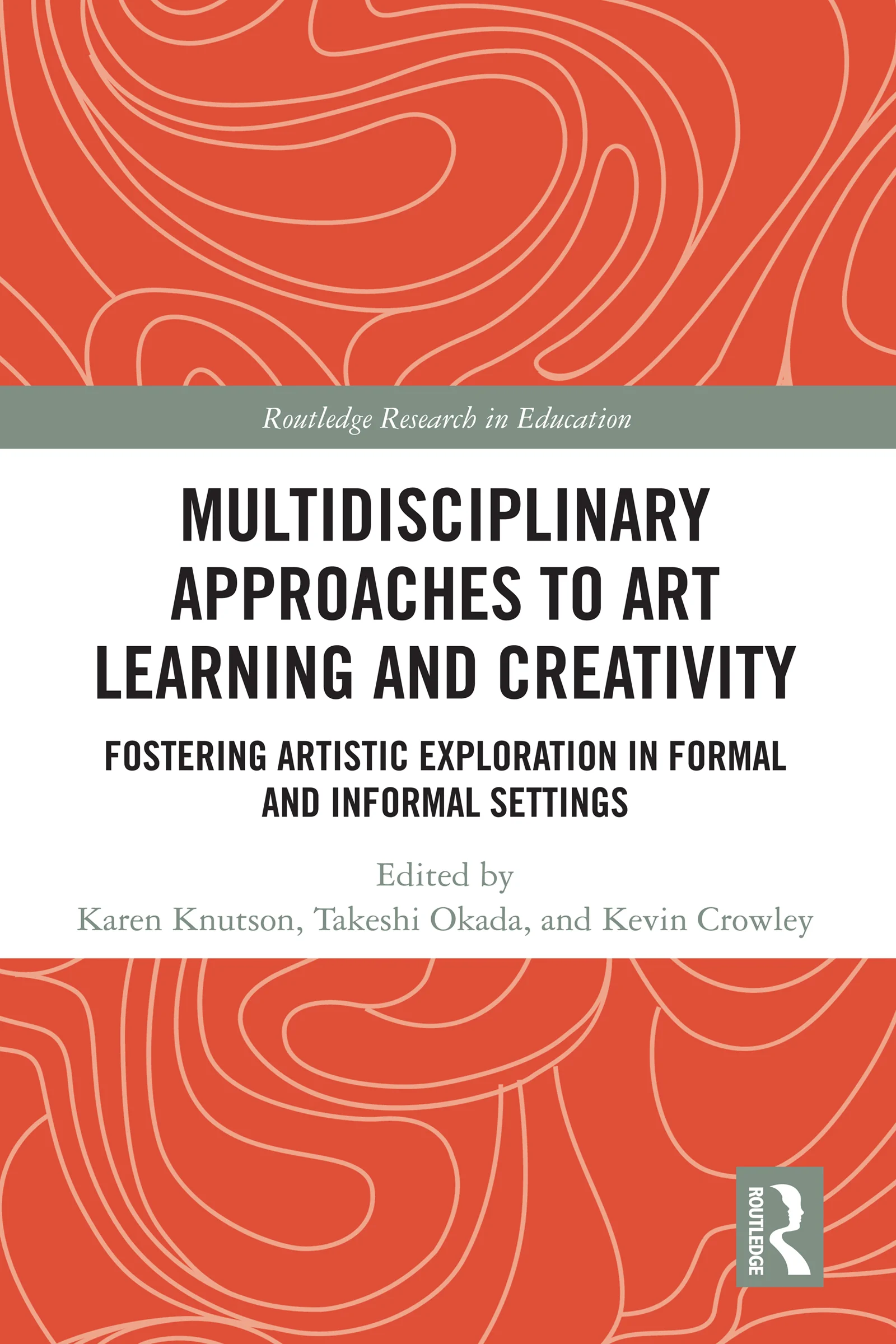
書籍名
Routledge Research in Education Multidisciplinary approaches to art learning and creativity Fostering artistic exploration in formal and informal settings
判型など
296ページ、ハードカバー
言語
英語
発行年月日
2020年9月3日
ISBN コード
9780815361886
出版社
Routledge
出版社URL
学内図書館貸出状況(OPAC)
英語版ページ指定
本書は、2016年11月に東京大学で編者達が開催した国際シンポジウム Tokyo International Symposium 2016 Art Learning and Creativity: Contemporary Issues in Formal and Informal Settings の発表者達の間で起こった活発なディスカッションに基づいて企画されました。本書は、アートの創造性や触発の理論的な基盤を探り、アートにおける学習のメカニズムや創造的プロセスを促進する要因について実証的に検討する学術書です。シンポジウムの発表者は、日本、アメリカ、フランス、デンマーク、ノルウェー、イギリスの研究者であり、国際的な視野のある執筆陣となっています。また、学問領域も、認知科学、芸術教育、テクノロジーやデジタルアート、学習科学、ミュージアム研究などと他領域に渡り、学際的な視点に基づいて、アートの学習に関する研究と実践を架橋することを試みています。
学校などのフォーマルな学習環境や,ミュージアムなどのインフォーマルな学習環境でアートの教育に携わる人達は、アートの創造性を支援することやアートの本質的価値を記述することに関心を寄せてきました。そのような研究と並行して、美術教育、インフォーマル学習、学習科学などの分野の研究者達も、創造性の発達を考慮したアート研究を行っています。
本書では、多様な観点から創造性の概念に焦点を当てた著者を集めました。すべての著者が、アートの学習における研究と実践の接点を探っています。また、各章をつなぐ横断的なテーマが多くありますが、私たちは各章を3つの主要なテーマ領域に位置づけました。
1) アートの実践とアートの学習の本質: 人々 (子供、学生、教育者、アーティスト、市民、訪問者など) はアート体験を通して何を、どのように学ぶのか?
2) 教えること、学ぶことのデザイン: 教師、ファシリテーター、仲間、そして学習環境はどのようにアートの学習に関係するのか? アートの実践、創造性、触発、あるいは芸術鑑賞をどのように教えるか?
3) 教育変革のためのシステム: フォーマル、インフォーマルな場におけるアートの学習のための持続可能な組織をどのようにデザインしたらよいのか?
これらの3つの観点から、アーティストの研究、美術館やコミュニティでのインフォーマルなアート体験、学校や大学などのフォーマルな学習環境での研究など、さまざまなチャプターが含まれています。また、テクノロジーとアート、アートをベースとした教育実践、アートを取り入れた学習環境のデザインに焦点をあてた章もあります。多くの章がビジュアルアートに焦点を当てていますが、音楽、ダンス、演劇に関する章も含まれています。本書は、大学や研究所の研究者だけではなく、学校やミュージアムの教育現場の実践家も読者として想定しています。
(紹介文執筆者: 教育学研究科・教育学部 教授 岡田 猛 / 2022)
本の目次
1.Art appreciation for inspiration and creation
2. Embodying artistic process in art gallery visits.
3. Relaxation and Reorganization of "Internal Constraints" in Artistic Creation: Studies Focusing on the Embodiment of Ideas and Interaction with Others in Breakdance
4. Stories: Trauma, Theater and Theory
5. The centrality of artistic practice to learning in the art museum.
Section 2: Designing for teaching and learning
6. Flexibility and social interactions: Two exercises to help art students to be more creative
7. Teaching Composition with Digital Tools: A Domain-Specific Perspective
8. Integrating Poïétique and cognitive science to analyze the creativity learning process in a drawing course for art education majors
9. The Role of Critique in the Development of Student-Artists Metacognitive Practices
Section 3: Systems for change in art learning and art education
10. Learning to be creative through the arts in Danish artist-school partnerships
11. Approaching art education as an ecology: Exploring the role of museums.
12. A different kind of learning: The value of a studio art class for Non-art graduate students
13. Growing up with art: How interest, opportunity and support shape learning pathways of visual arts professionals.
関連情報
How do People Create and Appreciate Arts, and How Should Such Processes be Supported? (『The Annual Report on Education Psychology in Japan』Volume 59 2020年3月30日)
https://doi.org/10.5926/arepj.59.144
書評:
Mary Stokrocki 評 (『International Journal of Education Through Art』Volume 18, Number 1, pp.126-128 2022年3月1日)
https://doi.org/10.1386/eta_00089_5



 書籍検索
書籍検索


 eBook
eBook

